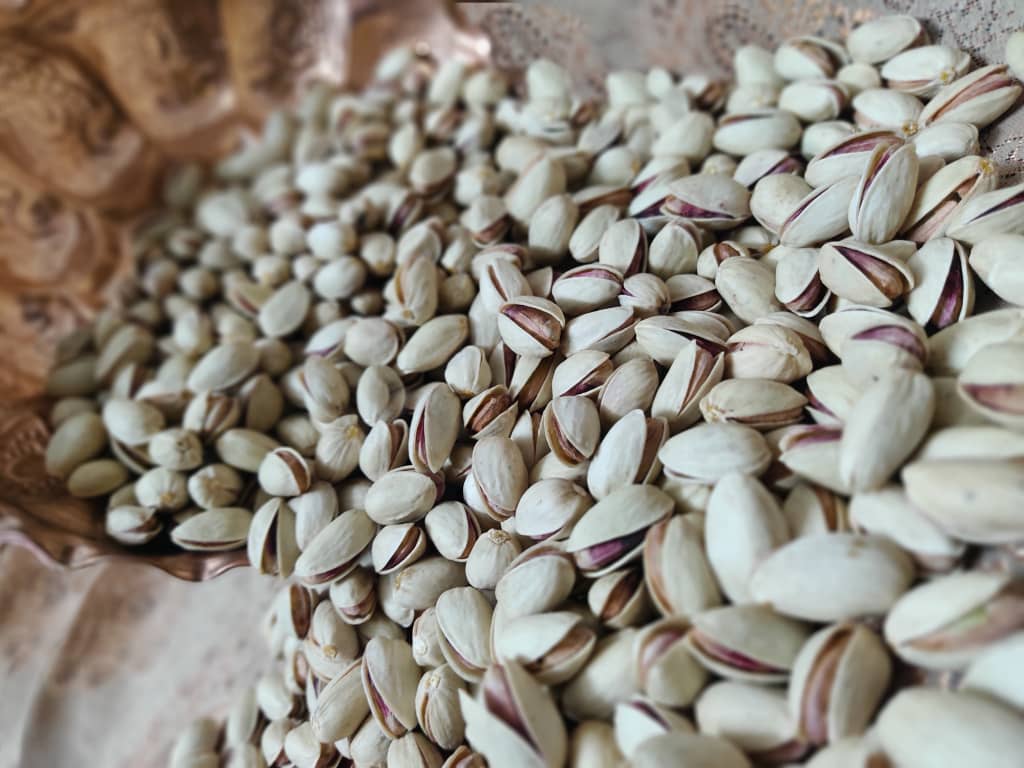The pistachios of the Persian Gulf are more than just a tasty snack; they represent a multi-million dollar industry deeply embedded in the region’s culture and economy. This analysis takes a granular look at the factors driving the pistachio market in the Gulf Cooperation Council (GCC) countries – Saudi Arabia, Kuwait, Oman, Qatar, Bahrain, and the United Arab Emirates (UAE).
Demand Driven by Demographics and Culture:
The GCC boasts a young and affluent population with a growing appetite for healthy and convenient snacks. Pistachios perfectly fit the bill, offering a good source of protein, healthy fats, and essential nutrients. Furthermore, pistachios hold a special place in Gulf culture. They are a symbol of hospitality, often offered to guests and prominently displayed during festivals and celebrations. This cultural significance translates into steady demand throughout the year, with peaks during Ramadan and Eid al-Fitr.
Beyond Geography: A Complex Supply Chain:
Iran, with its fertile pistachio groves, is geographically positioned to be the major supplier to the GCC. However, the relationship is not without its complexities. Political tensions and international sanctions on Iran have intermittently disrupted the flow of Iranian pistachios, forcing GCC countries to diversify their import sources. The United States, particularly California, has emerged as a significant alternative, offering high-quality pistachios.
A Matter of Taste: Premium Preferences and Evolving Trends:
GCC consumers have discerning palates when it comes to pistachios. Larger varieties like the Iranian Akbari and Ahmad Aghaei pistachios, known for their size and aesthetic appeal, command premium prices. Additionally, a growing segment of health-conscious consumers is driving the demand for organic and unsalted pistachios. The market is also witnessing a rise in popularity for flavored pistachios, with innovations like chili lime and honey roasted varieties catering to adventurous taste buds.
Navigating the Challenges: Price Fluctuations and Logistical Hurdles
Despite the strong demand, the GCC pistachio market faces challenges. Global pistachio production can be volatile, leading to price fluctuations that can impact consumer behavior. Competition from other nut varieties like almonds and cashews can also put pressure on pistachio sales. Furthermore, ensuring consistent quality and maintaining a cold chain for these perishable nuts pose logistical challenges, particularly during the hot summer months in the Gulf region.
A Look Towards the Horizon: Innovation and Sustainability Pave the Way
The future of the GCC pistachio market promises continued growth. Rising disposable incomes and increasing awareness of the health benefits of pistachios are likely to fuel demand. To stay ahead of the curve, stakeholders in the industry can explore innovative packaging solutions that enhance shelf life and visual appeal. Additionally, there’s an opportunity to tap into the growing consumer interest in sustainable practices. Promoting pistachios grown with environmentally friendly methods and ethically sourced from local or regional producers can be a winning strategy.

Standards and Regulations: Ensuring Quality in the Gulf’s Pistachio Paradise
The pistachio market in the Persian Gulf thrives not just on taste and tradition, but also on a robust framework of standards and regulations. These guidelines ensure the safety, quality, and consistency of pistachios reaching consumers across the GCC countries.
Here’s a breakdown of the key players involved in setting and enforcing these standards:
- International Standards: Codex Alimentarius Commission (CAC), a joint initiative by FAO (Food and Agriculture Organization) and WHO (World Health Organization), sets international food safety standards. These include guidelines for permissible levels of contaminants like aflatoxins, a toxin produced by mold that can be harmful to human health.
- Regional Standards: The Gulf Standardization Organization (GSO) develops technical regulations for various food products, including pistachios. These standards often align with CAC guidelines but may also include additional regional requirements. For example, GSO standards might specify acceptable moisture content, shell integrity, or specific size grades for pistachios.
- National Regulations: Each GCC country has its own food safety and quality control authorities responsible for enforcing national regulations and GSO standards. These authorities conduct inspections, analyze samples, and issue import/export permits to ensure compliance.
Focus on Specific Concerns:
Here are some of the key areas addressed by these standards and regulations:
- Aflatoxin Levels: Strict regulations limit the permissible levels of aflatoxins in imported and locally produced pistachios. This protects consumers from potential health risks associated with aflatoxin contamination.
- Grading and Labeling: Standards often define specific quality grades for pistachios based on size, color, and defect levels. Clear labeling requirements ensure consumers are informed about the origin, grade, processing methods, and any added ingredients in their pistachio purchases.
- Pesticide Residues: Regulations establish maximum residue limits for pesticides used in pistachio cultivation. This safeguards consumer health and promotes responsible agricultural practices.
Challenges and Opportunities:
While these standards play a crucial role in safeguarding the pistachio market, there are challenges to consider:
- Harmonization: Ensuring consistent interpretation and enforcement of standards across all GCC countries can be complex.
- Rapid Testing: Developing efficient and cost-effective methods for rapid aflatoxin testing at border points is crucial for smooth trade flow.
Despite these challenges, the focus on standards presents opportunities:
- Building Consumer Trust: Robust regulatory frameworks can build trust among consumers, making them more confident about the safety and quality of pistachios they purchase.
- Facilitating Trade: Harmonized standards can streamline trade procedures within the GCC and with other countries, promoting regional and international trade in pistachios.
Looking Ahead:
Continued collaboration between international, regional, and national regulatory bodies is vital to ensure the GCC pistachio market thrives based on a foundation of quality, safety, and consumer confidence.
Beyond the Basics: Additional Considerations for a Holistic View
For a truly comprehensive understanding of the GCC pistachio market, it’s crucial to consider these additional factors:
- The Impact of COVID-19: The pandemic may have had a lasting effect on consumer buying habits, with a potential shift towards online grocery shopping and increased focus on immunity-boosting foods like pistachios.
- Government Regulations: Trade policies and import duties levied by GCC governments can significantly impact the affordability and accessibility of pistachios in the region.
- Sustainability Concerns: As environmental awareness grows, consumers are placing a premium on ethically sourced and sustainably produced food items. Pistachio producers in the GCC can capitalize on this trend by adopting eco-friendly farming practices and promoting their commitment to sustainability.
By acknowledging these diverse influences, investors, producers, and retailers can make informed decisions to capitalize on the immense potential of the pistachio market in the dynamic and ever-evolving economies of the Persian Gulf.


I was recommended this website by my cousin I am not sure whether this post is written by him as nobody else know such detailed about my trouble You are amazing Thanks.